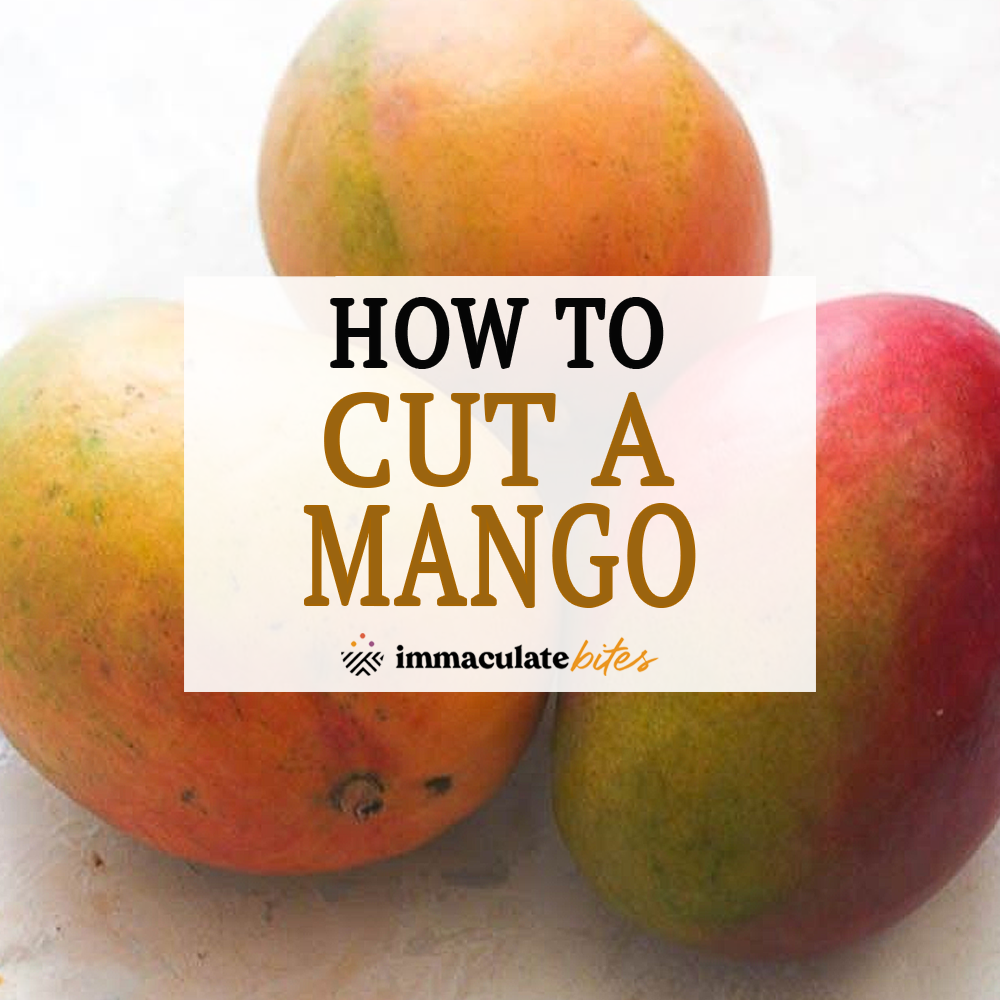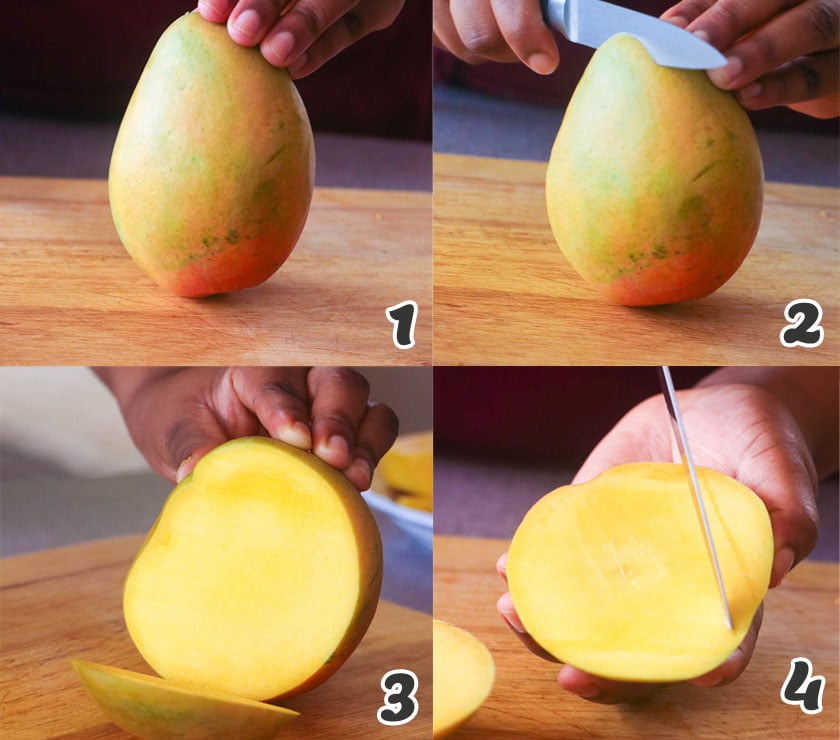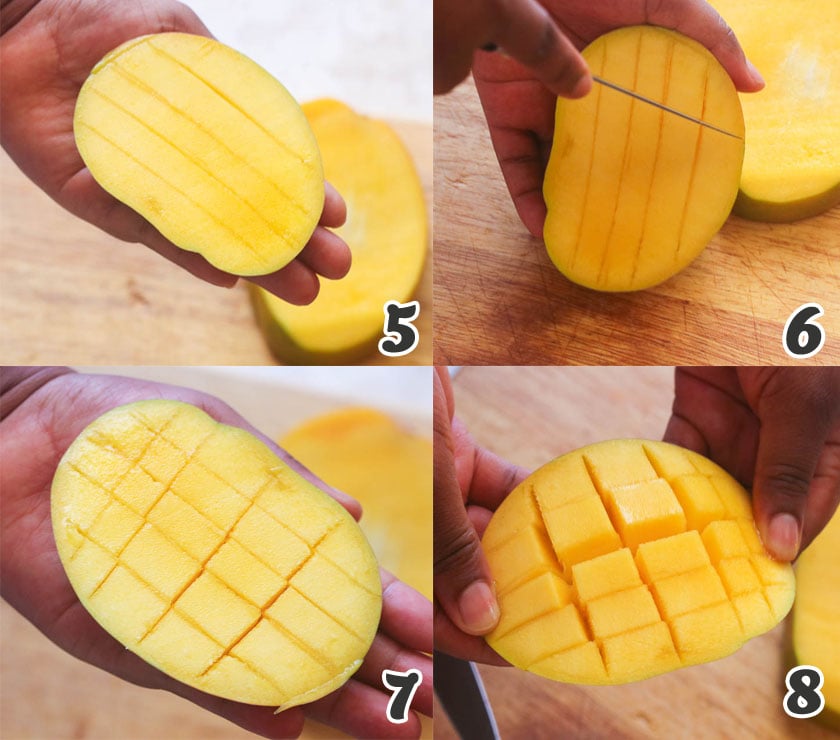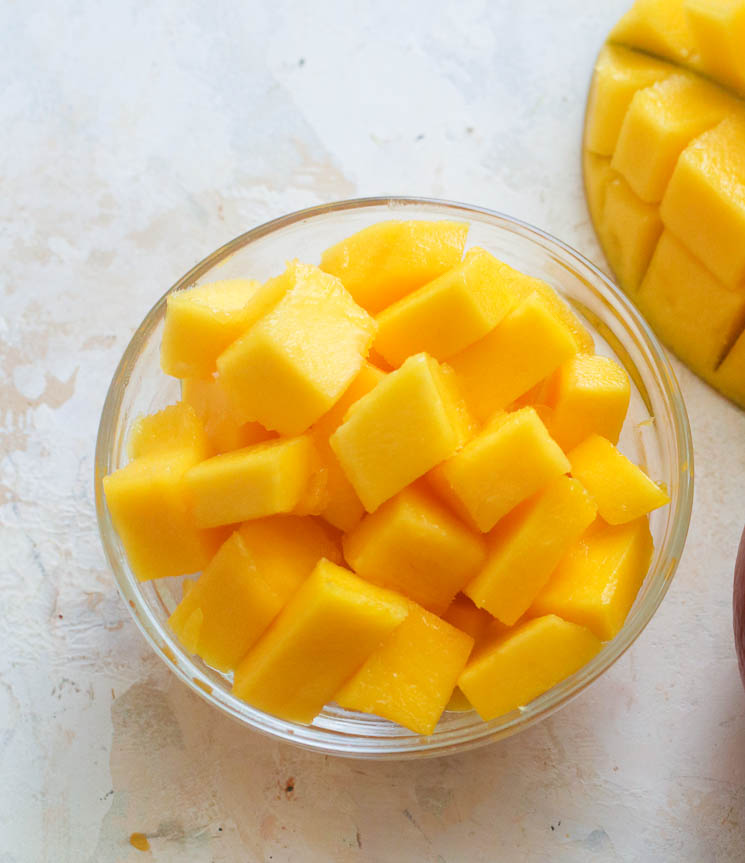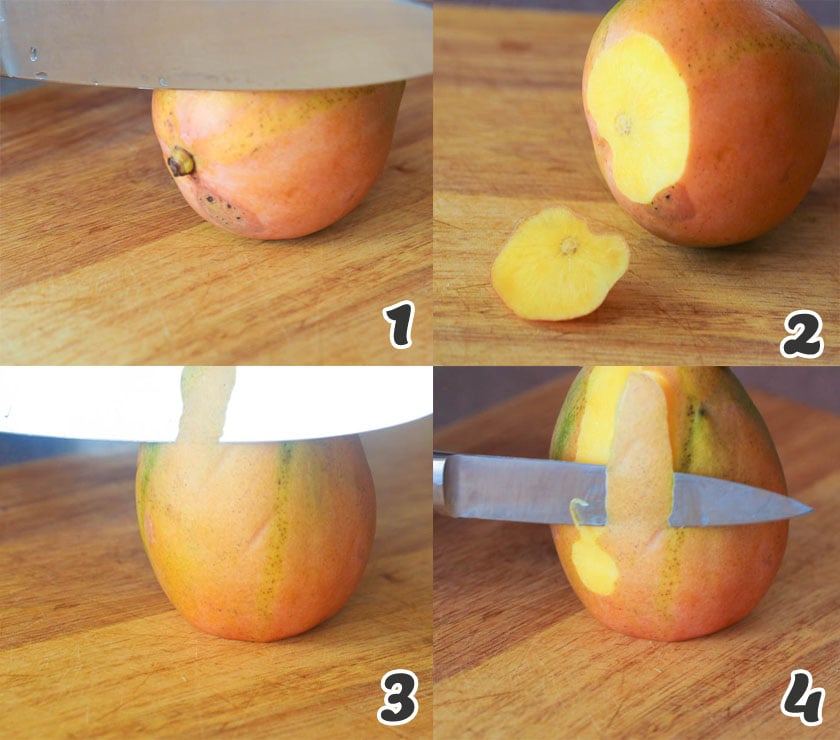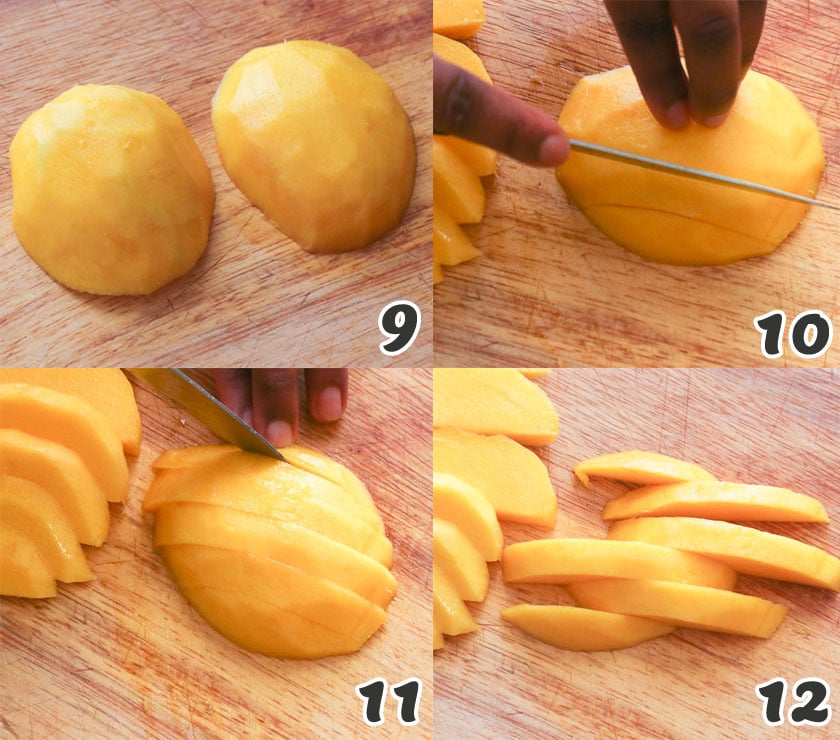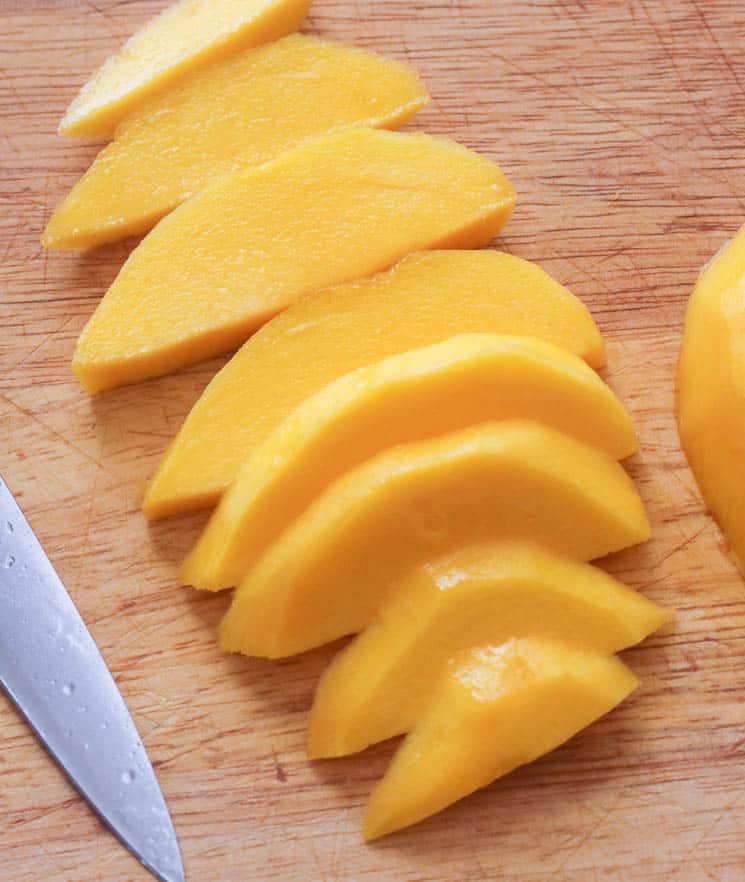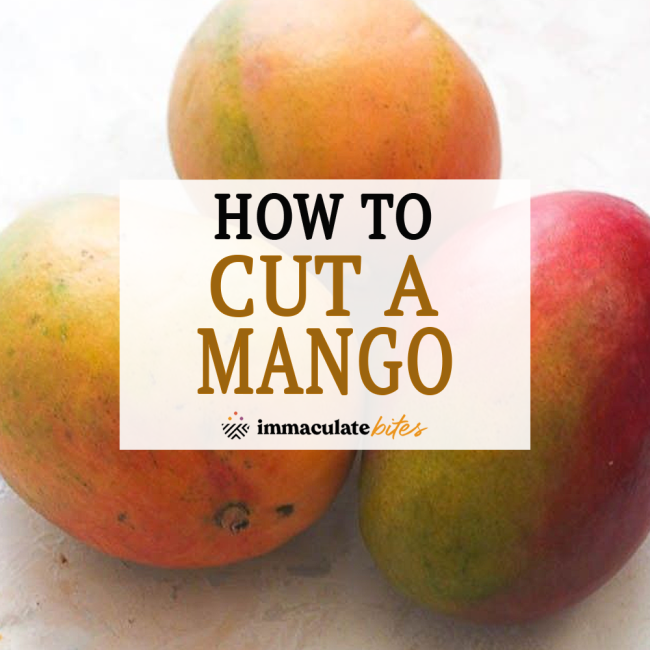Well, no more kitchen tragedies, my friends. Because in this guide, you’ll learn how to pick out a perfectly ripe mango and cut it up quickly and easily, sans the slippery messes and frustration! 😅
Different Type of Mangos
There are dozens of different kinds of mangos, but there are a few common varieties you’re likely to come across in your local grocery store:
Tommy Atkins – This variety is super common in the U.S., and its peak season runs from March until July. They can be red, dark green, yellow, or a combination of the three colors. You’ll know they’re ripe by their mouthwatering fragrance and feel.Haden – This is the most widely grown mango in the world! It, too, is green, yellow, and red, but unlike the Tommy Atkins, its green patches turn yellow as it ripens, giving you a visual indication that it’s ready to eat. These mangos are most common from March through May.Kent – These mangos are large with a dark green color accented by a dark red blush on a small part of the mango. Yellow dots or undertones appear as the mango ripens. They are usually available from December through February.Honey (a.k.a. Ataulfo) – With a vibrant yellow color, these mangos are a bit smaller, and the flesh is practically fiber-free. The skin turns a more golden color and wrinkles slightly as they ripen. You can find honey mangos in stores from March to July.
How to Know a Mango is Ripe
As noted above, some kinds of mangos have visual indicators that help you see if the mango is ripe or not, but not all. Your best bet is to feel and smell a mango to know if it is ready to eat. A ripe mango should be firm but give just slightly when you give it a gentle squeeze. You can also smell the mango near the stem. Ripe mangos give off that classic tropical aroma. If the mango is still very hard, you can store it at room temperature until it ripens. It will be challenging to cut and cube if it gets too soft, so those might be better suited for a mango drink like a mango margarita or a mango lemonade. 🤤
How to Store Freshly-Cut Mango
Store the cut mango in an airtight container; either a Tupperware-style container with a lid or a Ziplock bag works. Squeeze out any excess air before storing it if you use a bag. The cut pieces will stay good for 3-5 days. You can also freeze fresh-cut mango. To make them easier to use later, line a small baking sheet with parchment paper and spread the mango out, keeping each piece separate from the others, so they don’t stick together. Once the pieces are firmly frozen, you can put them in an airtight container. They’ll keep in the freezer for up to six months and work great for making smoothies! 👍
Recipes with Ripe Mangos
Mango SalsaBanana Mango MuffinsNo-Bake Key Lime, Mango, Coconut Cheesecake PieMango FoolCouscous Mango Corn SaladMango Avocado Shrimp Salad & Mango Dressing
